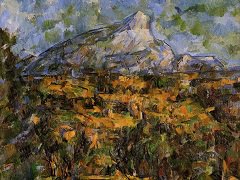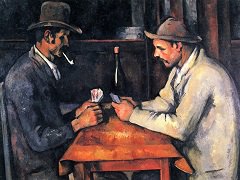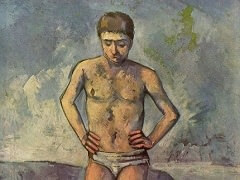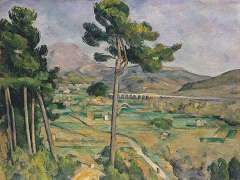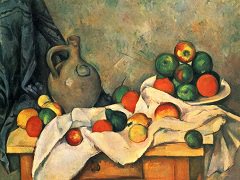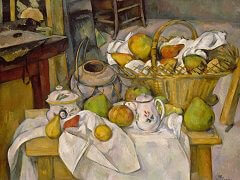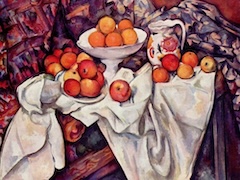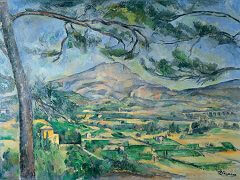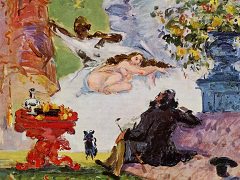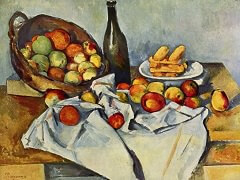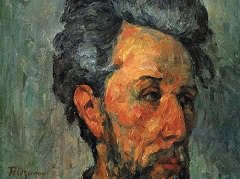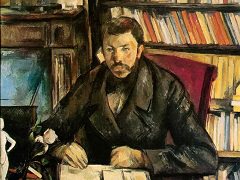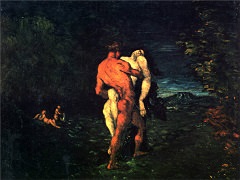The Artist's Father Reading his Newspaper, 1866 - by Paul Cezanne
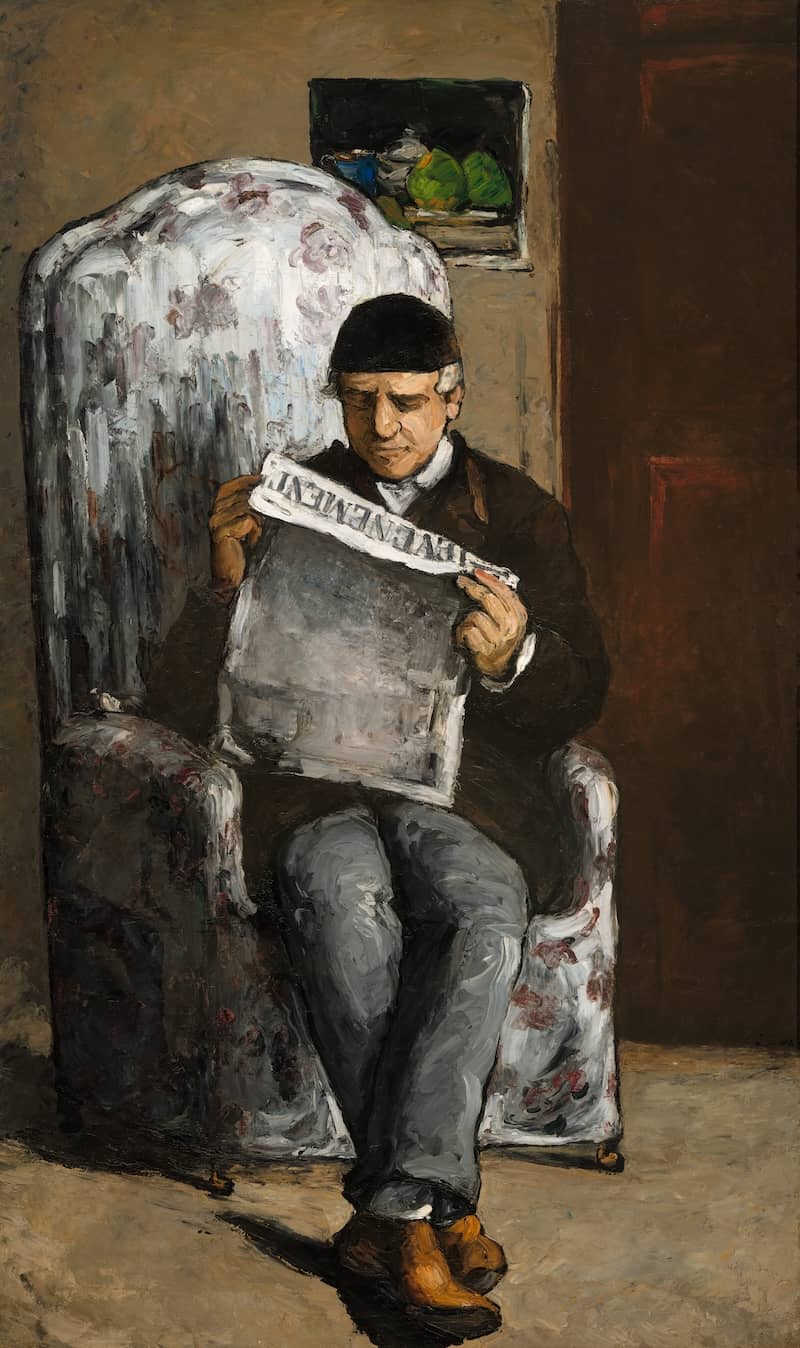
Cézanne's relationship with his father was not an easy one. The elder Cézanne, a successful banker, was unimpressed with his son's intention to become a painter. Some of the tension between them can be sensed here: the father seems precarious on the edge of his overlarge, chintz-covered "throne," his toes barely contained on the painted surface. The newspaper is not the journal that the senior Cézanne habitually read. It betrays Cézanne's intentions: it was in this newspaper, L'Événement, that Cézanne's boyhood friend Emile Zola had published favorable reviews of painters like Gustave Courbet and Édouard Manet.
The small framed picture behind Cézanne's father makes another pointed statement. It is a still life Cézanne had painted a short while before. Here it becomes an emblem for his career and devotion to a bold, modern manner. It and the portrait are both aggressively painted - "with a pistol," a critic said. The paints are thick - some applied with a heavily laden brush, others troweled on in thick runnels with a palette knife. This is typical of Cézanne's early works, as are the dark, somber colors, blacks and grays. It was impressionist Camille Pissarro, Cézanne would say later, who rid his palette of "black, bitumen, burnt sienna. . . . "


